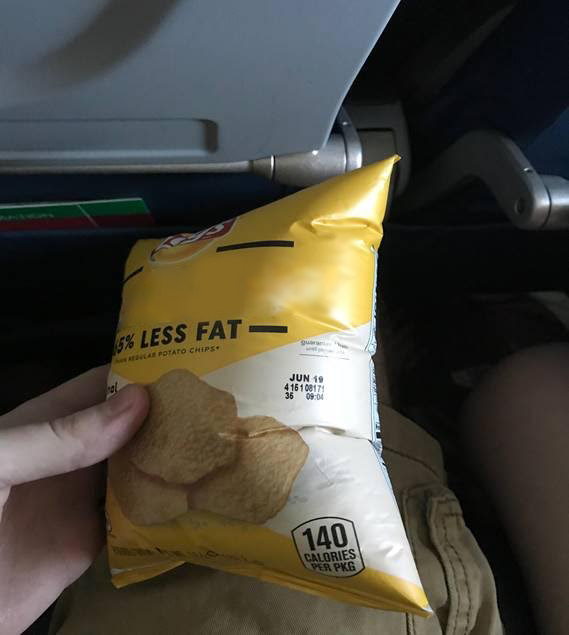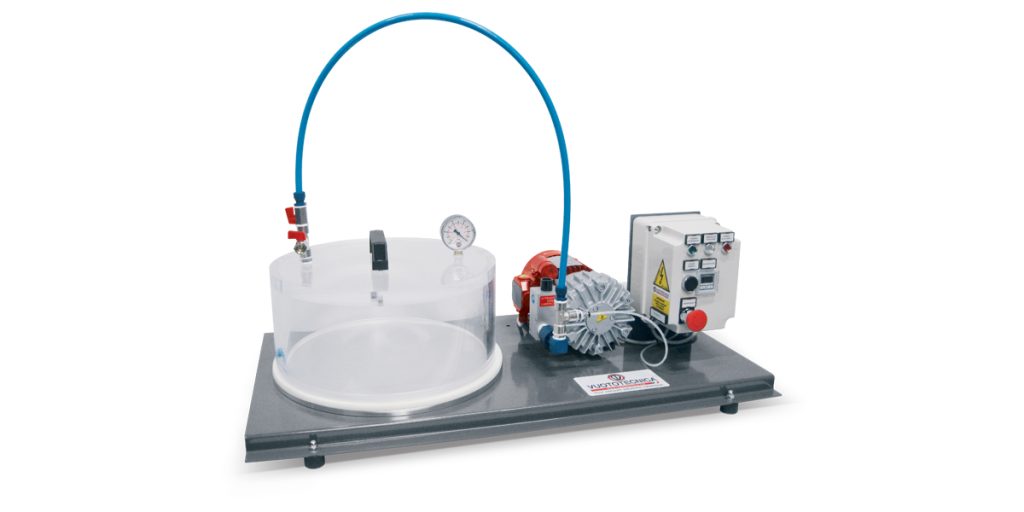If you have ever eaten a packet of chips on an airplane, you know that the pressure tends to inflate the packet.

Passenger airplane cabins are pressurized so that when you rise in altitude, the pressure remains constant in proportion to the pressure outside.
When the difference between the cabin and the outside reaches a certain point, the cabin pressure starts to be lower and stops until it matches the pressure recorded at about 2400 meters above sea level, regardless of how high we fly.
In such a situation, the air in the snack packs expands.
It is a mechanism that manufacturers consider carefully because the package, of course, must hold even on a plane or a mountain to ensure the preservation and quality of the product inside.
So Vuototecnica devised ATS testing system, a machine to check the tightness of flowpack seals.

Operation is quick and intuitive: the pack inside the bell inflates by the same reasoning as in the airplane; the greater the degree of vacuum achieved in the bell of the testing device, the greater the pressure that the air contained in the pack exerts on the walls and, consequently, on the seals.
Vuototecnica testing devices consist of:
– A Plexiglas bell.
– A table top with gasket.
– A rotary vane, dry vacuum pump.
– Two manual two-way valves to intercept the vacuum.
– A vacuum gauge for reading the degree of vacuum and feeding air into the chamber, at the end of the cycle.
– An electrical control equipment, in a protective box, with a digital vacuum switch, to adjust the degree of vacuum inside the bell.
– A folded sheet steel frame, with anti-vibration feet, to assemble the components.
You can choose the vacuum generator according to the degree of vacuum you wish to achieve, and adjust the values, providing for automatic repetition of the same, according to the applications.
Please, contact Vuototecnica at: www.vuototecnica.net.


